Why you can trust Tom's Hardware
Advanced Transient Response Tests
For details about our transient response testing, please click here.
In the real world, power supplies are always working with loads that change. It's of immense importance, then, for the PSU to keep its rails within the ATX specification's defined ranges. The smaller the deviations, the more stable your PC will be with less stress applied to its components.
We should note that the ATX spec requires capacitive loading during the transient rests, but in our methodology, we also choose to apply a worst case scenario with no additional capacitance on the rails.
Advanced Transient Response at 20% – 20ms
| Voltage | Before | After | Change | Pass/Fail |
|---|---|---|---|---|
| 12V | 12.133V | 11.962V | 1.41% | Pass |
| 5V | 5.111V | 5.035V | 1.49% | Pass |
| 3.3V | 3.307V | 3.201V | 3.21% | Pass |
| 5VSB | 5.073V | 5.023V | 0.99% | Pass |
Advanced Transient Response at 20% – 10ms
| Voltage | Before | After | Change | Pass/Fail |
|---|---|---|---|---|
| 12V | 12.136V | 11.972V | 1.35% | Pass |
| 5V | 5.111V | 5.023V | 1.72% | Pass |
| 3.3V | 3.308V | 3.189V | 3.60% | Pass |
| 5VSB | 5.073V | 5.022V | 1.01% | Pass |
Advanced Transient Response at 20% – 1ms
| Voltage | Before | After | Change | Pass/Fail |
|---|---|---|---|---|
| 12V | 12.136V | 11.937V | 1.64% | Pass |
| 5V | 5.111V | 5.035V | 1.49% | Pass |
| 3.3V | 3.308V | 3.180V | 3.87% | Pass |
| 5VSB | 5.073V | 5.019V | 1.06% | Pass |
Advanced Transient Response at 50% – 20ms
| Voltage | Before | After | Change | Pass/Fail |
|---|---|---|---|---|
| 12V | 12.092V | 11.831V | 2.16% | Pass |
| 5V | 5.071V | 5.018V | 1.05% | Pass |
| 3.3V | 3.268V | 3.130V | 4.22% | Fail |
| 5VSB | 5.024V | 4.965V | 1.17% | Pass |
Advanced Transient Response at 50% – 10ms
| Voltage | Before | After | Change | Pass/Fail |
|---|---|---|---|---|
| 12V | 12.091V | 11.848V | 2.01% | Pass |
| 5V | 5.071V | 5.005V | 1.30% | Pass |
| 3.3V | 3.269V | 3.169V | 3.06% | Pass |
| 5VSB | 5.024V | 4.981V | 0.86% | Pass |
Advanced Transient Response at 50% – 1ms
| Voltage | Before | After | Change | Pass/Fail |
|---|---|---|---|---|
| 12V | 12.092V | 11.883V | 1.73% | Pass |
| 5V | 5.071V | 4.995V | 1.50% | Pass |
| 3.3V | 3.268V | 3.158V | 3.37% | Pass |
| 5VSB | 5.024V | 4.980V | 0.88% | Pass |

Results 25-29: Transient Response







The 12V rail achieves decent performance for the standards of the SFX category, and the 5V rail is the best performer in these tests. Typically, the 3.3V rail is the worst performer, although, in this PSU, the deviations are not that high. Still, in several tests, it fails to keep its voltage above 3.2V, and in one test, it drops below the limit (3.14V).
Turn-On Transient Tests
In the next set of tests, we measure the PSU's response in simpler transient load scenarios—during its power-on phase. Ideally, we don't want to see any voltage overshoots or spikes since those put a lot of stress on the DC-DC converters of installed components.

Turn-On Transient Response Scope Shots


The 5VSB overshoot looks and is nasty. It stays below 5.5V, though, so it doesn't exceed the corresponding ATX spec limit. Nonetheless, Enhance should fix this issue. On the contrary, the 12V rail doesn't have voltage overshoot problems.
Power Supply Timing Tests
There are several signals generated by the power supply, which need to be within specified, by the ATX spec, ranges. If they are not, there can be compatibility issues with other system parts, especially mainboards. Starting in 2020, a PSU's Power-on time (T1) has to be lower than 150ms and the PWR_OK delay (T3) from 100 to 150ms, to be compatible with the Alternative Sleep Mode.
Get Tom's Hardware's best news and in-depth reviews, straight to your inbox.
| T1 (Power-on time) & T3 (PWR_OK delay) | ||
|---|---|---|
| Load | T1 | T3 |
| 20% | 160ms | 130ms |
| 100% | 160ms | 130ms |
The PWR_OK delay is within the 100-150ms region, so the PSU could support the alternative sleep mode if the Power-on time was lower than 150ms.
Ripple Measurements
Ripple represents the AC fluctuations (periodic) and noise (random) found in the PSU's DC rails. This phenomenon significantly decreases the capacitors' lifespan because it causes them to run hotter. A 10-degree Celsius increase can cut into a cap's useful life by 50%. Ripple also plays an important role in overall system stability, especially when overclocking is involved.
The ripple limits, according to the ATX specification, are 120mV (+12V) and 50mV (5V, 3.3V, and 5VSB).
| Test | 12V | 5V | 3.3V | 5VSB | Pass/Fail |
| 10% Load | 9.7 mV | 5.0 mV | 4.3 mV | 11.8 mV | Pass |
| 20% Load | 25.0 mV | 5.4 mV | 5.3 mV | 12.4 mV | Pass |
| 30% Load | 16.6 mV | 5.6 mV | 6.2 mV | 12.9 mV | Pass |
| 40% Load | 28.2 mV | 6.3 mV | 7.0 mV | 13.6 mV | Pass |
| 50% Load | 28.0 mV | 6.7 mV | 8.4 mV | 14.2 mV | Pass |
| 60% Load | 30.8 mV | 6.6 mV | 8.5 mV | 15.2 mV | Pass |
| 70% Load | 36.6 mV | 7.1 mV | 8.8 mV | 16.7 mV | Pass |
| 80% Load | 39.6 mV | 7.8 mV | 12.9 mV | 18.2 mV | Pass |
| 90% Load | 41.5 mV | 8.1 mV | 13.7 mV | 18.5 mV | Pass |
| 100% Load | 52.6 mV | 8.8 mV | 14.4 mV | 23.5 mV | Pass |
| 110% Load | 65.1 mV | 22.8 mV | 26.2 mV | 52.9 mV | Fail |
| Crossload 1 | 18.8 mV | 7.4 mV | 10.9 mV | 8.8 mV | Pass |
| Crossload 2 | 52.5 mV | 7.0 mV | 10.6 mV | 19.2 mV | Pass |

Results 30-33: Ripple Suppression

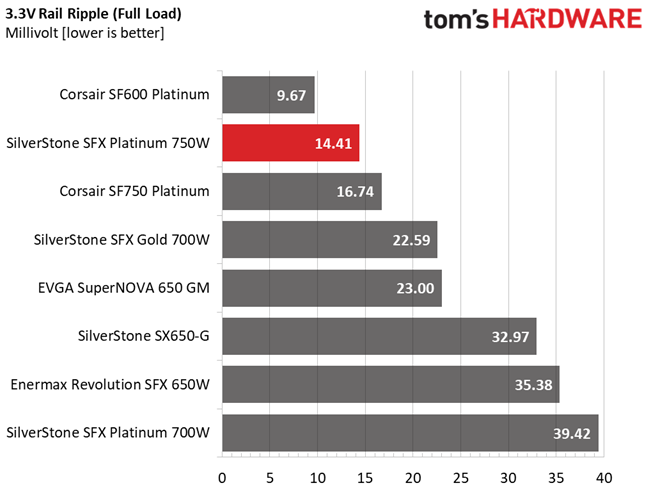

Ripple suppression is excellent on the minor rails, and merely satisfactory at 12V.
Ripple At Full Load
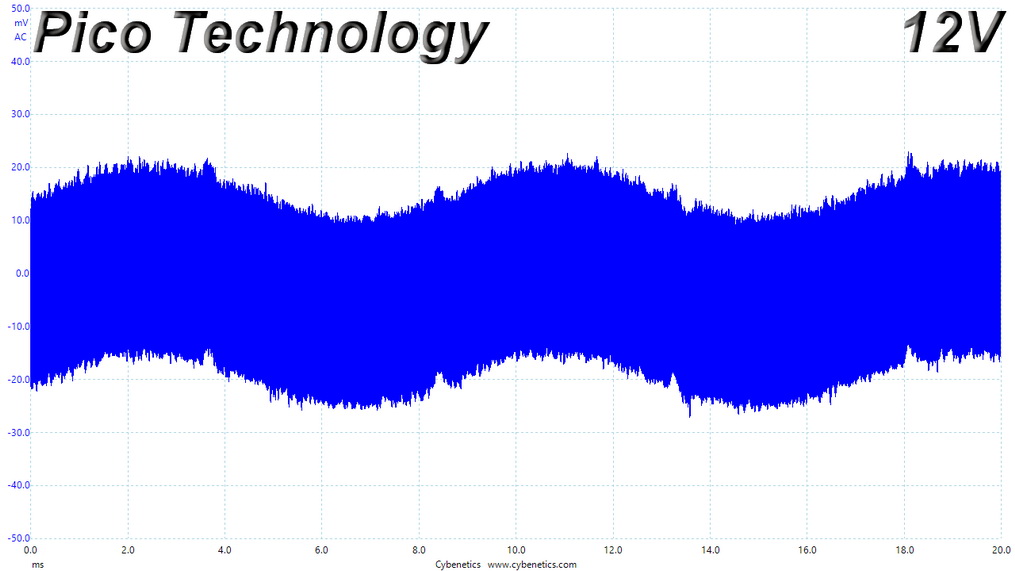
Ripple Full Load Scope Shots


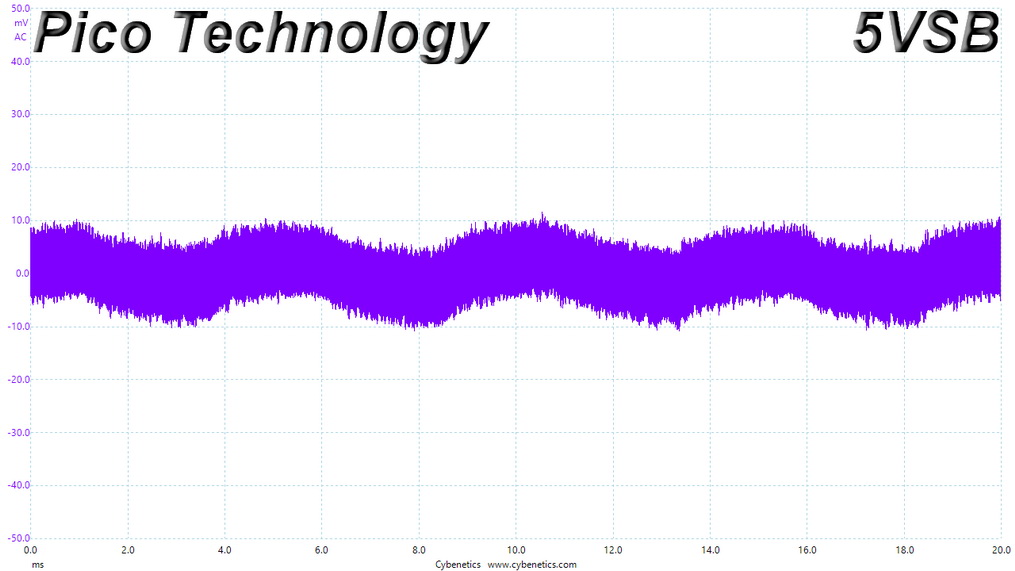
Ripple At 110% Load

Ripple 110% Load Scope Shots


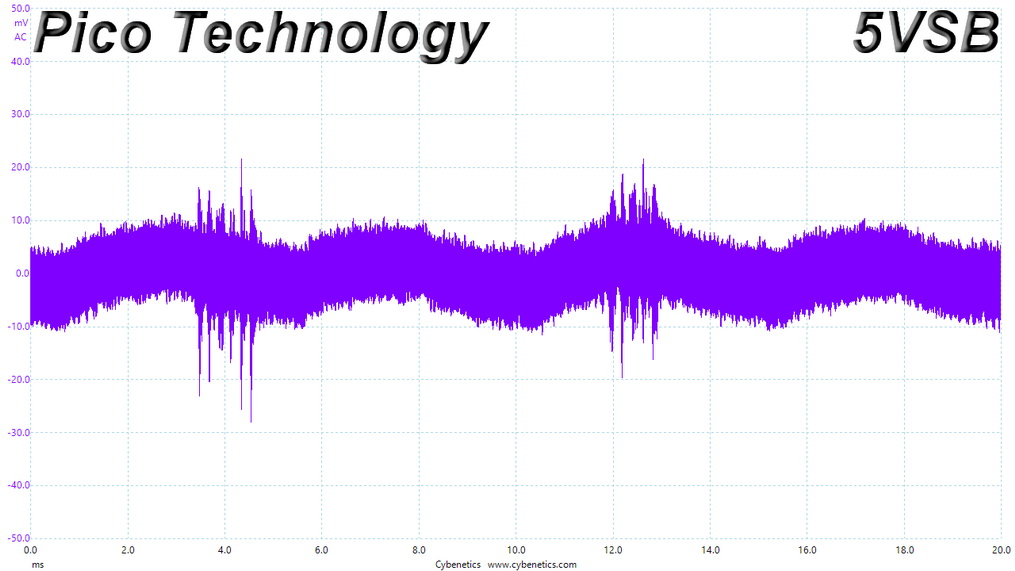
Ripple At Cross-Load 1

Ripple CL1 Load Scope Shots



Ripple At Cross-Load 2

Ripple CL2 Load Scope Shots
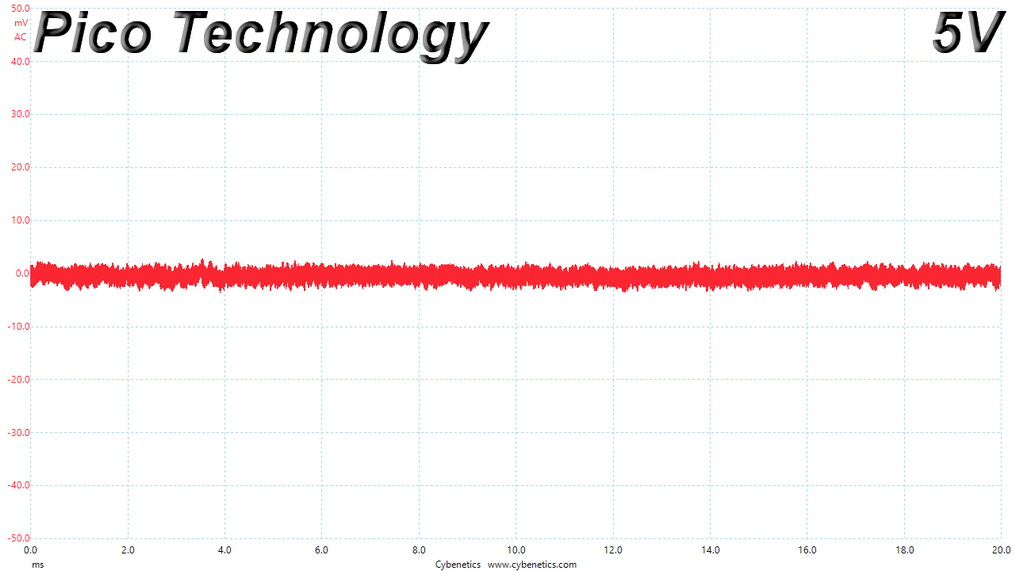


EMC Pre-Compliance Testing – Average & Quasi-Peak EMI Detector Results
Electromagnetic Compatibility (EMC) is the ability of a device to operate properly in its environment without disrupting the proper operation of other nearby devices.
Electromagnetic Interference (EMI) stands for the electromagnetic energy a device emits, and it can cause problems in other nearby devices if too high. For example, it can be the cause of increased static noise in your headphones or/and speakers.
Some spurs are exceeding the limits in the 730-808 kHz ratio, but with the QP EMI detector, most likely, there won't be any issues.
MORE: Best Power Supplies
MORE: How We Test Power Supplies
MORE: All Power Supply Content
Current page: Transient Response Tests, Timing Tests, Ripple Measurements and EMC Pre-Compliance Testing
Prev Page Protection Features, DC Power Sequencing, Cross-Load Tests and Infrared Images Next Page Performance, Noise, Efficiency and Power Factor
Aris Mpitziopoulos is a contributing editor at Tom's Hardware, covering PSUs.
-
solrac0192 Reply
This is for 1.1 Model based on the fifth image:RYANFSS said:Is this review based on v1.1 model or 1.0?
https://cdn.mos.cms.futurecdn.net/tLnQZkRbv4r546DVRoo3ub-970-80.jpg.webp -
AiteeTaitii The review (and manufacturer website) says there are four 8-pin PCIe connectors. I wish I had read the review with enough attention at the time, as it says "only three sockets for EPS and PCIe cables".Reply
I bought the PSU (and have been very happy with it earlier) but now later got "lucky" in the GPU drought with a GPU that wants three PCIe power cables. A dumb non-native speaker like me didn't realize there's a difference between socket and connector, especially when manufacturer site only uses word "connector". CPU eats one, so two are left. Sure, I can "power" all the GPU sockets when using the split-ended PCIe cable. But still I feel a bit uncomfortable reading the small print from manufacturer manual about maximum power draw and voiding warranty: "dual PCIe 8pin connectors that exceed 375W total power draw (300W from two PICe 8 pin connectors + 75W from PCIe motherboard slot)".
So far, things have worked well, GPU power draw stays just below 360W on high load. There are not many options for SFX-size PSU with so many PCIe sockets...
